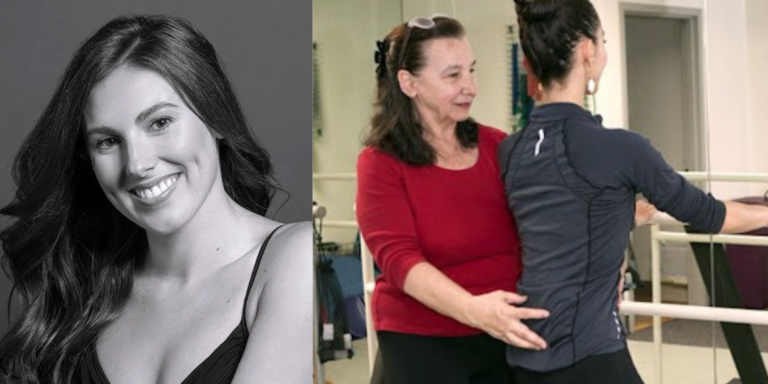
Unlike the majority of my students and colleagues, my journey in dance has been unorthodox. At age 14, I enrolled in modern dance at my high school, and something about the large open studio with room to move thrilled me (and still does). I immediately set out to impress my dance teacher with my complete repertoire, a solo interpretation of “Bohemian Rhapsody” created in my living room, infused with several badly self-taught ice-skating moves. In that moment, an awareness of the power of movement, music, space and performance aligned, and I instinctively knew I was someplace special.
My high school dance teacher was smart. Knowing that she did not have the time to mold us into technically proficient dancers, she introduced us to the craft and skill of making dances. I spent four years opening the door to my creative voice, becoming a confident choreographer. As a dance major in college, however, I quickly realized I was lacking something very important: actual dance training. So I began an intense regimen of studying, analyzing, copying, stealing and emulating every movement language, quality and nuance with which I could connect. Later, I completed a master’s degree in choreography and choreological studies, formed a small dance company and set out to fund my artist’s life with teaching.
As a modern dancer, and having come to dance late, communication and imagery were significant in managing the demands of my training. I had to ask a lot of questions, because I had not yet developed a physical vocabulary of answers. I needed a sense of humor, to prevent me from quitting. I had to negotiate, rationalize, moderate and articulate, both verbally and physically, a pathway through much of what I was performing in or choreographing. This allowed me to solve problems more creatively, from a place separate from a perspective of pure technical ability. I now use these same methods for teaching students.
Use your imagination
When learning a phrase of material or a combination, ask yourself these questions: Where does this movement take place? What images does this movement reference? What is the mood and how does the movement/music support that mood? What story can be told with this movement?
Search for clues from your instructor
Listen and watch carefully. What kind of descriptive words are being used to explain the material? And how are those words being said? (Slow and elongated? Quick and rhythmic?) Notice how the movement is being acted out as well as physically performed.
Ask questions
Sometimes teachers do not offer clear instructions. A student’s job is to ask questions. A teacher’s job is to answer them. Don’t guess and don’t pass over or ignore material you are unsure of. Get clarification.
Fill your brain
Read lots of books and articles, watch dance videos of all kinds, see as many shows outside of ballet as possible, ask about the history of choreographers and the work they make, analyze the work you see, discuss and have opinions about what you see and learn, and ask opinions of others. Information feeds the mind and the body. Stay curious!
Always have mentors
It could be a teacher, a counselor, a professional dancer you know or your mom’s best friend. Have someone you can bounce ideas off of, express your concerns and ask for advice. Dance training is hard, so don’t do it alone. We all need someone to lean on!



